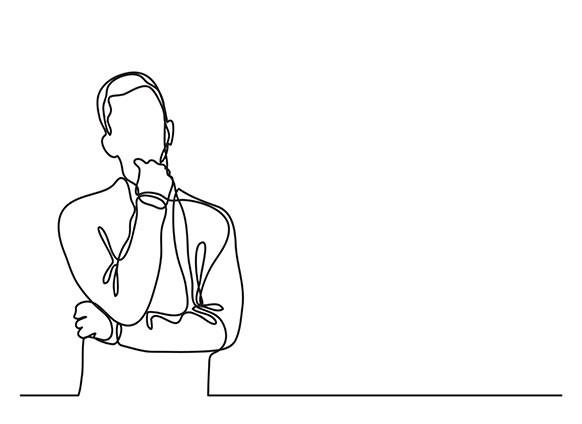
5 minute read
Joshua Pandian
Coronavirus is spreading fast,
but what is spreading faster?
By Dana Morcillo
What is the coronavirus?
The term coronavirus refers not to the newest, mysterious disease that is slowly spreading globally, but rather a family of viruses. These viruses are the source behind common illnesses such as the common cold to the more recent outbreaks of the coronavirus disease 2019 (COVID-19). Other more severe diseases have occurred before then such as the Severe Acute Respiratory Syndrome (SARS) in 2003 and Middle East Respiratory Syndrome (MERS) in 2012. However, both had a combined number of only 29 cases in the United States.4Coronaviruses are animal-borne diseases meaning they begin as diseases in mammals or birds. Although animal-borne viruses are usually not able to transfer to humans, a virus can mutate allowing it to be transmitted to humans. Once transmitted to humans, the coronavirus often causes an upper respiratory infection with mild symptoms, but certain types such as MERS and SARS will have more severe symptoms.2

COVID-19was first discovered in the Huanan Seafood Wholesale Market in Wuhan, China, in December of 2019.1,2The Huanan Seafood Wholesale Market is a wet market where live animals are bought and sold. Through the close proximity of the animals and humans, the virus would have been able to jump from animals to humans. While the disease is believed to have originated from the bats, pangolins -an armored nocturnal mammal -are believed to act as an intermediary before passing over to humans.3Studies into past coronaviruses have found similar transmittance with SARS being transmitted from civet cats to humans and MERS being transmitted from dromedary camels to humans.1
How did it originate?

References
1. Abutaleb, Y. (2020, January 24). How the new coronavirus differs from SARS, measles and Ebola. Retrieved from https:// www.washingtonpost.com/health/how-the-new-coronavirusdiffers-from-sars-measles-and-ebola/2020/01/23/aac6bb063e1b-11ea-b90d-5652806c3b3a_story.html
2. Centers for Disease Control and Prevention. (2019). About Corona virus Disease 2019 (COVID-19). Retrieved fromhttps:// www.cdc.gov/coronavirus/about/index.html
3. France-Presse, A. (2020, February 7). Pangolins may have spread coronavirus to humans. Retrieved from https:// www.theguardian.com/world/2020/feb/07/pangolins-mighthave-spread-coronavirus-to-humans 4. World Health Organization. (2019). Coronavirus. Retrieved fromhttps://www.who.int/health-topics/coronavirus
5. Zeng, Jing. (2020, February 27). Sensationalist media is exacerbating racist coronavirus fears. We need to combat it. Retrieved from https://www.theguardian.com/commentisfree/2020/ feb/28/sensationalist-media-is-exacerbating-racistcoronavirus-fears-we-need-to-combat-it
6. Kestler-D’Amours, Jillian. (2020, February 2). Chinese Canadians denounce rising xenophobia tied to coronavirus. Retrieved from https://www.aljazeera.com/news/2020/02/chinese-ca nadians-denounce-rising-xenophobia-tied-coronavirus200202191216923.html
How does it spread and what are the symptoms?
Due to the novelty of COVID-19, how it spreads is mostly based on previous coronaviruses such as the common cold, SARS and MERS. There are two believed paths in which transmission for COVID-19 occurs: person-to-person and contact with infected surfaces and objects. Person-to-person transmission is the most likely route according to the CDC.2This can happen through close contact within 6 feet or coughing and sneezing which produces infective respiratory droplets. Contact through infected surfaces and objects is a less likely route. It occurs through an individual touching an area with the virus present and then touching their mouth, nose, or eyes.2
If infected, symptoms may appear between 2 to 14 days after exposure. A mild infection includes symptoms of fever, cough, and shortness of breath or difficulty breathing. A severe infection leads to severe illnesses suchas pneumonia.1,2Moreover, it’s believed that infected individuals are most contagious when they exhibit the most symptoms or are most sick. However, it’s possible for individuals to still spread the coronavirus without showing symptoms, but this isn’t believed to be the main way the disease is spreading.2
Stigmas. COVID-19 is the official name used by the CDC, but often -and even now -the virus was referred to as the “Wuhan virus” or the “China Virus.” While COVID-19 did originate in Wuhan, China, the words and language used when speaking about the virus are important. They carry power. More importantly, they carry the power to hurt. Globally, there has been an increase in xenophobic and overall, racist attacks. In Australia, parents refused to let their children be treated by Asian doctors.5 In Canada, a petition was formed and signed by over 10,000 residents to track and name Chinese-American students after any travel to China.6 In America, Chinese restaurants are struggling to stay afloat after business has gone down and racist attacks have been seen on public transits from the West to East Coast.7 A survey by the Asian Pacific Policy & Planning Council (A3PCON) has received over 1,100 reports of racist attacks from being coughed or spat at to physical assault.8 However, these racist attacks don’t only affect Asians and Asian Americans but other minorities as well.

While the CDC has officially recommended that all Americans wear face masks, minorities are afraid of the larger implications at hand.9 Historically, bandanas when worn by Hispanics or African Americans have been strongly associated with gang involvement and violence. The worry then becomes that minorities wearing masks made of bandanas or other materials will be stereotyped and targeted. The most recent instance being two African American men who claim to have been escorted out of Walmart for wearing masks.10
Going forward, it’s important that all individuals feel safe and accepted during such a fearful time. COVID-19 does not discriminate. All individuals are susceptible to it, especially our medical and essential workers. While we can do our duty of social distancing and staying at home to protect others, we also have a greater duty. To speak accurately and empathetically when it comes to COVID-19 and those affected by it. By knowing and understanding the facts can every individual prevent the spread of stigmas and hate, but instead foster compassion and understanding.
So, what is spreading faster than coronavirus?
7. Escobar, Natalie. (2020, March 4). When Xenophobia Spreads Like A Virus. Retrieved from https://www.npr.org/2020/03/02/811363404/whenxenophobia-spreads-like-a-virus
8. Jeung, Russell. (2020, March 25). Incidents of Coronavirus Discrimination. Retrieved from http://ww.asianpacificpolicyandplanningcouncil.org/ wp-content/uploads/A3PCON_Public_Weekly_Report_3.pdf
9. Centers for Disease Control and Prevention (2020) Recommendations Regard ing the Use of Cloth Face Coverings, Especially in Areas of Signifi cant Community-Based Transmission. Retrieved from https:// www.cdc.gov/coronavirus/2019-ncov/prevent-getting-sick/cloth-facecover.html
10. Melendez, Lyanne. (2020, April 9). Coronavirus help: Berkeley-based pro gram to distribute medical masks to African American, Latino com munities https://abc7news.com/coronavirus-bay-area-lockdownshelter-in-place-update-california-covid-cases/6090822/







